Desserts - part 1: A Central European sugar high
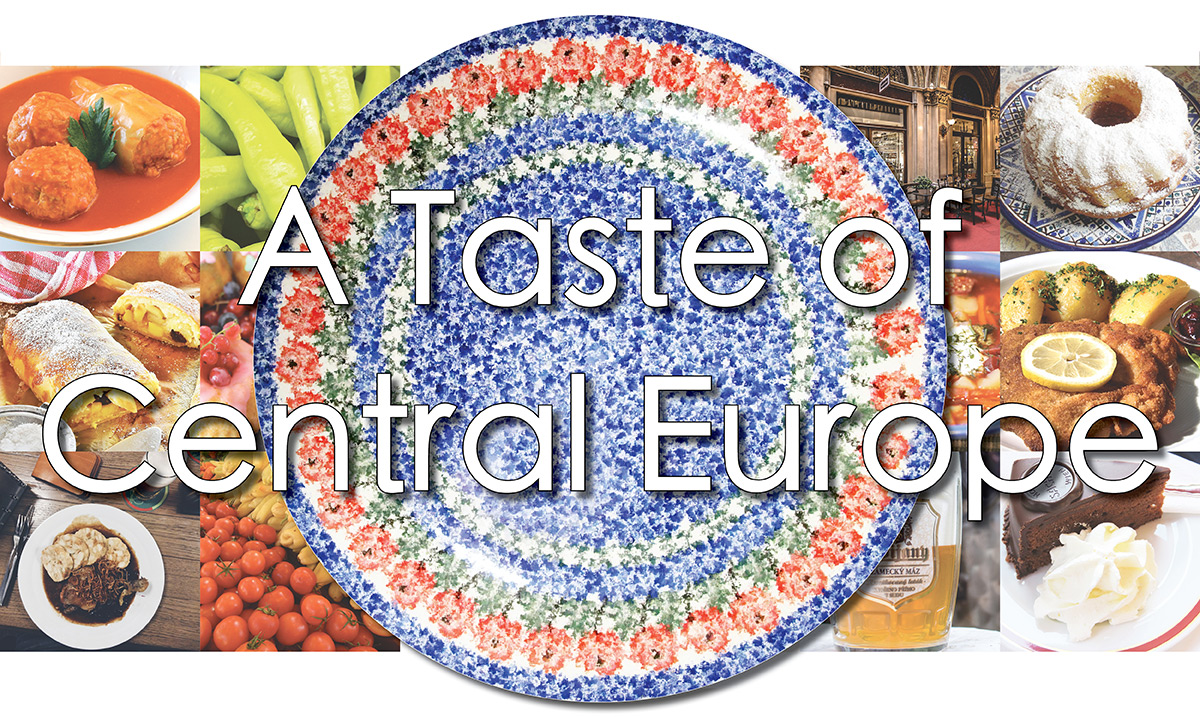
Ah, dessert. We’ve arrived at a truly special destination in our journey across the culinary landscape of Central Europe. While for most North Americans, cake and pastry fit into the dietary pyramid as occasional indulgences — mostly special occasions, at that — confectionary culture in Central Europe is something else entirely. A visitor to Vienna, Budapest, or Prague, feeling in the mood for a little treat, might stroll innocently enough into one of the region’s famed Kaffeehäuser. Expecting to inhale an ephemeral nibble of carbohydrates and be on their way, they’d instead find themselves utterly absorbed by a world of dessert-ritual bordering on religiosity. Here, desserts are to be savoured slowly, reverently, between sips of very strong coffee and, almost as importantly, rich and leisurely conversation. It’s not by accident that some of the most brilliant minds in the Austro-Hungarian Empire — from Sigmund Freud to Václav Havel — composed, philosophized, analyzed, and even organized revolutions in these historic cafes… over dessert. Dessert in Central Europe is something truly inspired. And sugar is the brain’s preferred fuel source, after all.
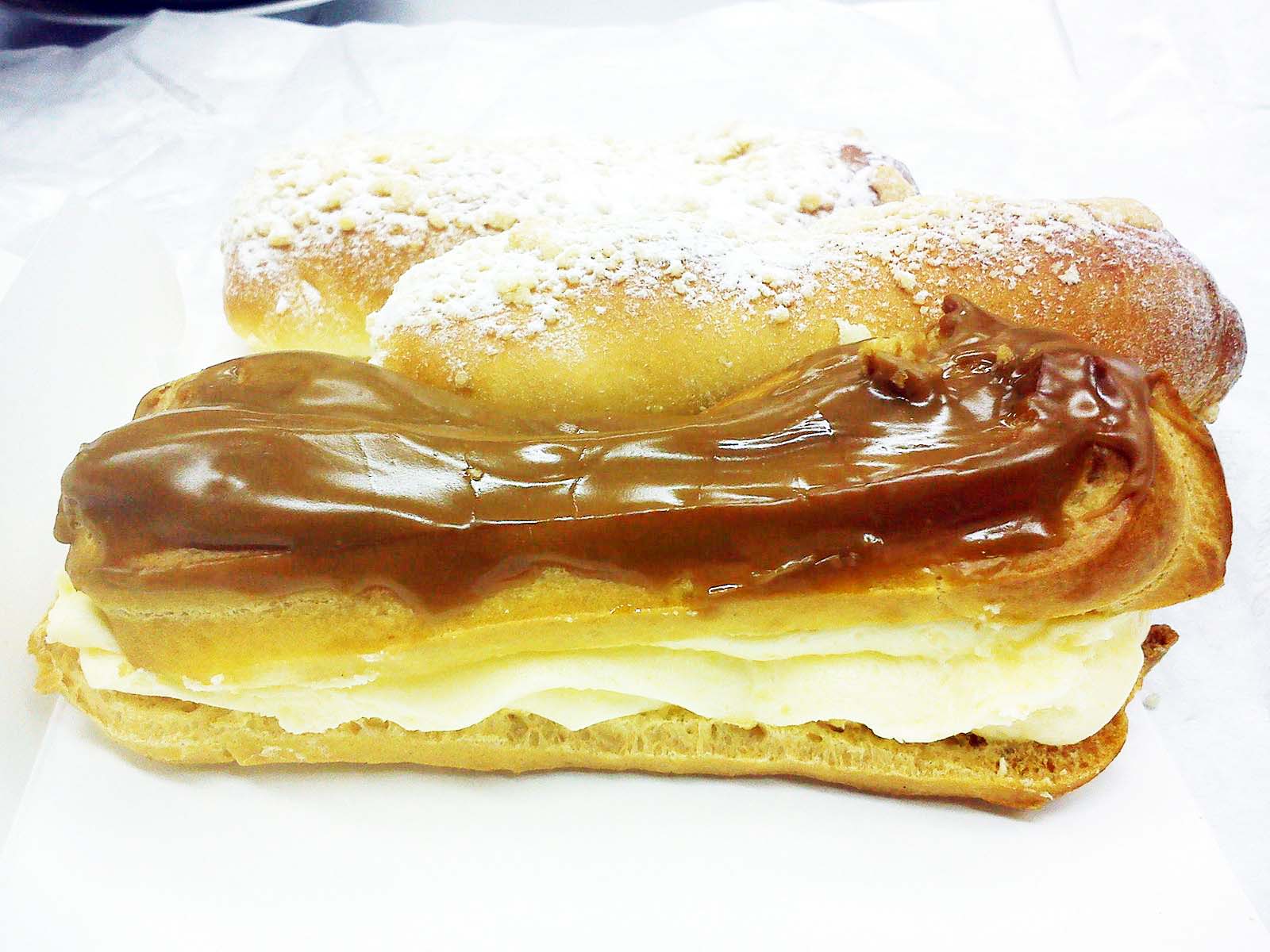
But leaving the grandeur of the large and bustling cities behind, turn down any street in any Polish or Czech or Hungarian village and you are sure to find yourself passing a gleaming bakery window every other step! Expect lots of fresh cream, puff pastry, yeasted cakes, ground nuts, and poppy seed fillings. There are endless variations but from bakery to Kaffeehaus to konditorei, one thing holds true: the Central European pastry case is much like an edible library; each sumptuous slice holds history baked into its delicate crumb and lore sandwiched between the layers. And so, naturally, we will begin our tasting menu with a tale of two torten (and a strudel for good measure). And when it comes to Central Europe, you would be hard pressed to think of two more iconic cakes than the Dobos Torta and the Sachertorte.
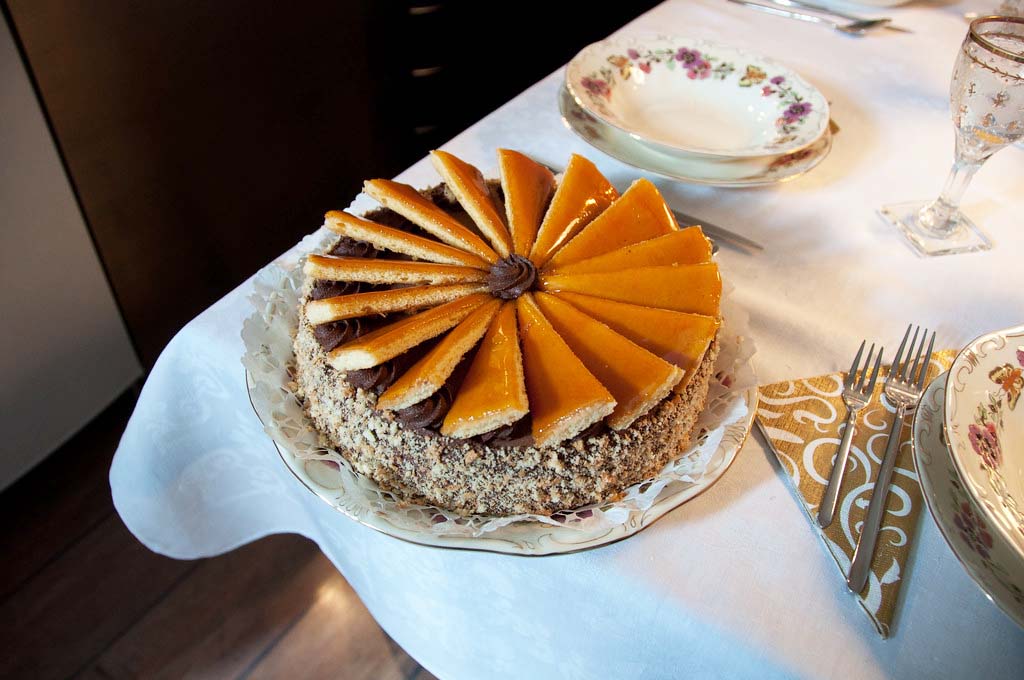
At the first General National Exhibition in Budapest in 1885, a chef named Jószef Dobos who came from a family of cooks and ran a gourmet food shop catering to the well-to-do of Budapest, manned a pavilion where he proffered exquisite pastries and other delights to fair-goers. His creations gained the favour of two very important taste-testers, the Emperor and Empress themselves. Their endorsement, quite rightly, catapulted Dobos to a kind of 19th century gastronomical celebrity status and, not long after, he introduced the eponymous dessert that would become the most famous and enduring of all his creations: the Dobos torta.
Composed of several dainty layers of delicate sponge, sandwiched by a luxurious chocolate buttercream (a component recently devised by French pastry chefs), and enrobed by golden caramel and fragrant toasted hazelnuts, the cake was an instant success. Soon, Dobos torta was not only beloved by Hungarians, but devoured by those with sweet-tooths far and wide as the cake was shipped — thanks to a special packaging Dobos devised himself — to capitals across Europe.
For several years, Dobos kept the recipe a closely guarded secret. But in 1906, when the master chef decided to hang up his apron and retire, Dobos endowed the Budapest Trade Association with the recipe, thus preserving the cake and his place amongst the most famous chefs of the empire for over a century to come.
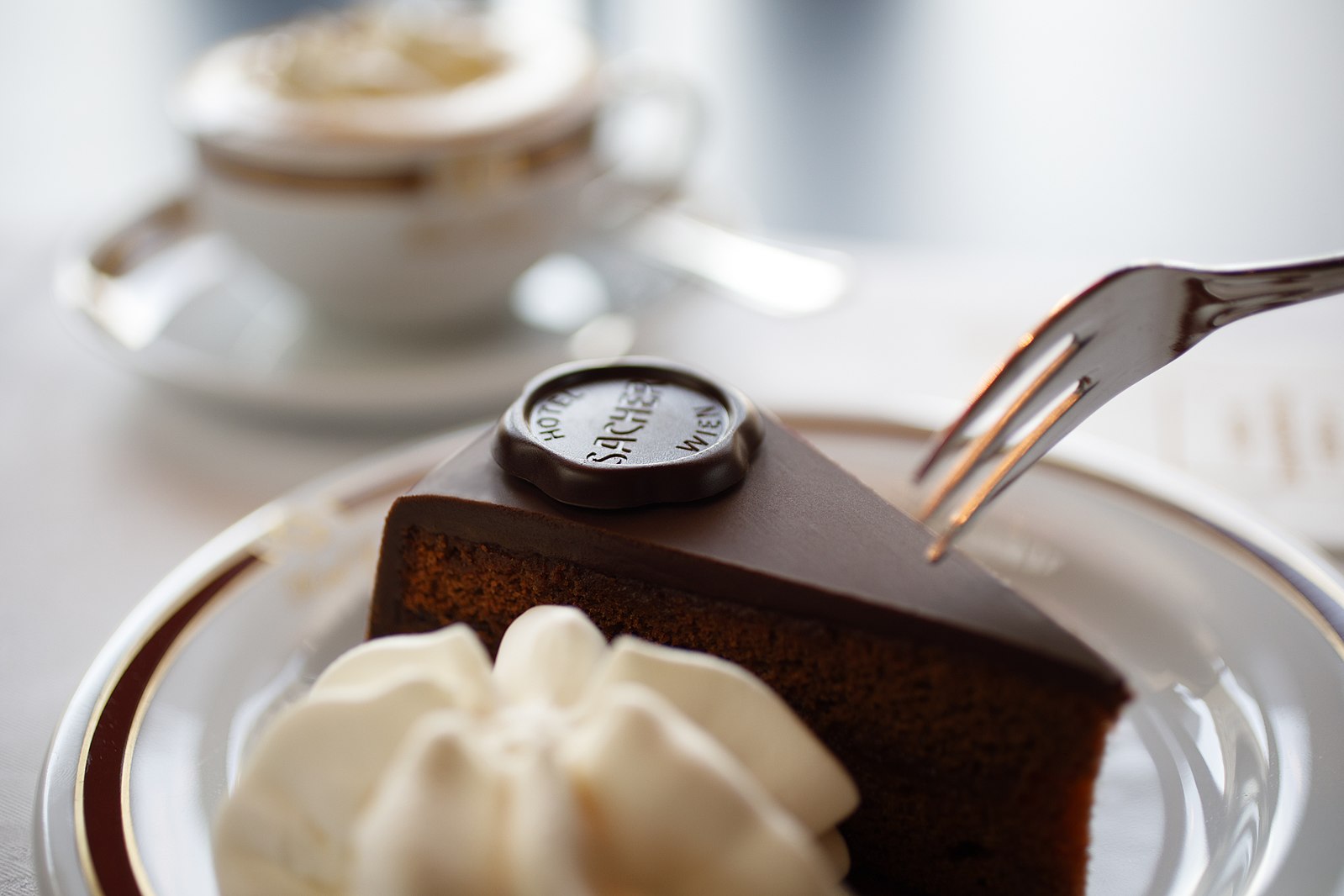
If Helen of Troy was the face that launched a thousand ships, the sachertorte was the cake that launched the most heated legal debate about any cake in modern history. Commissioned by Klemens, Prince von Metternich in 1832, the torte was expressly designed to embody masculinity in a dessert (yes, really). Notions of “light and fluffy” were strictly off the table; the recipe to success in this case involved a densely structured cake with deep chocolate flavour, split and layered with tangy apricot preserves. Now so far, all of these elements were delicious, but not exactly cutting edge. The cake still needed a final touch to truly become a torte par excellence. When Prince von Metternich’s head pastry chef fell ill before the cake could be completed, the task of bringing this bold, ‘masculine’ cake to life fell on the shoulders of sixteen-year-old Franz Sacher, the kitchen’s humble second apprentice. Quite a lofty challenge for a young chef! Young Franz, however, was up to the task. He devised a glossy chocolate coating with which to enrobe the cake, adding even more structure and density to every bite. The cake was, by all accounts, a smashing success. Before he knew it, the young apprentice found himself employed in a senior position at Dehne, the emperor’s royal bakery. It was here that Franz was able to offer his creation to the hankering masses.
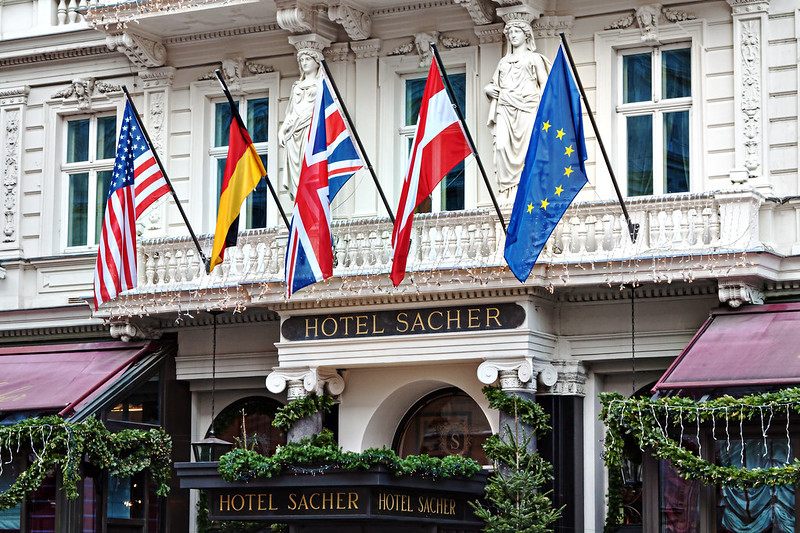
Years later, the production of the cake had seen several changes of hands as bakeries were bought and sold. Franz, having passed away in 1907, entrusted the recipe to his son Eduard who had followed in his father’s footsteps as a culinary entrepreneur and had opened what would become known as the famous and glamorous Hotel Sacher. In the meantime, though, as the popularity of the cake grew and it became firmly established as a signature Austrian dessert, everyone wanted a piece of the sachertorte! Especially those with a vested business interest. Dehne, which had employed Franz Sacher all those years ago, had been bought out and renamed in 1857 after proprietor Christoph Demel. Demel, in 1934, began selling what it called the “Eduard Sacher-Torte”. Meanwhile, the Hotel Sacher, which had been managed by Eduard’s widow, Anna, until she had run into financial difficulties, was now being run by the Gürtler family who offered their version, the “Original Sacher Torte”. What’s in a name? Plenty, if you ask the Gürtlers, who were keen to distinguish their version of the cake as, well, the original. This dispute would lead to seven years of litigation finally ending in 1938 with the Hotel Sacher awarded the exclusive rights to call their version the “Original Sacher Torte”. Their exact recipe is a closely guarded secret to this day!
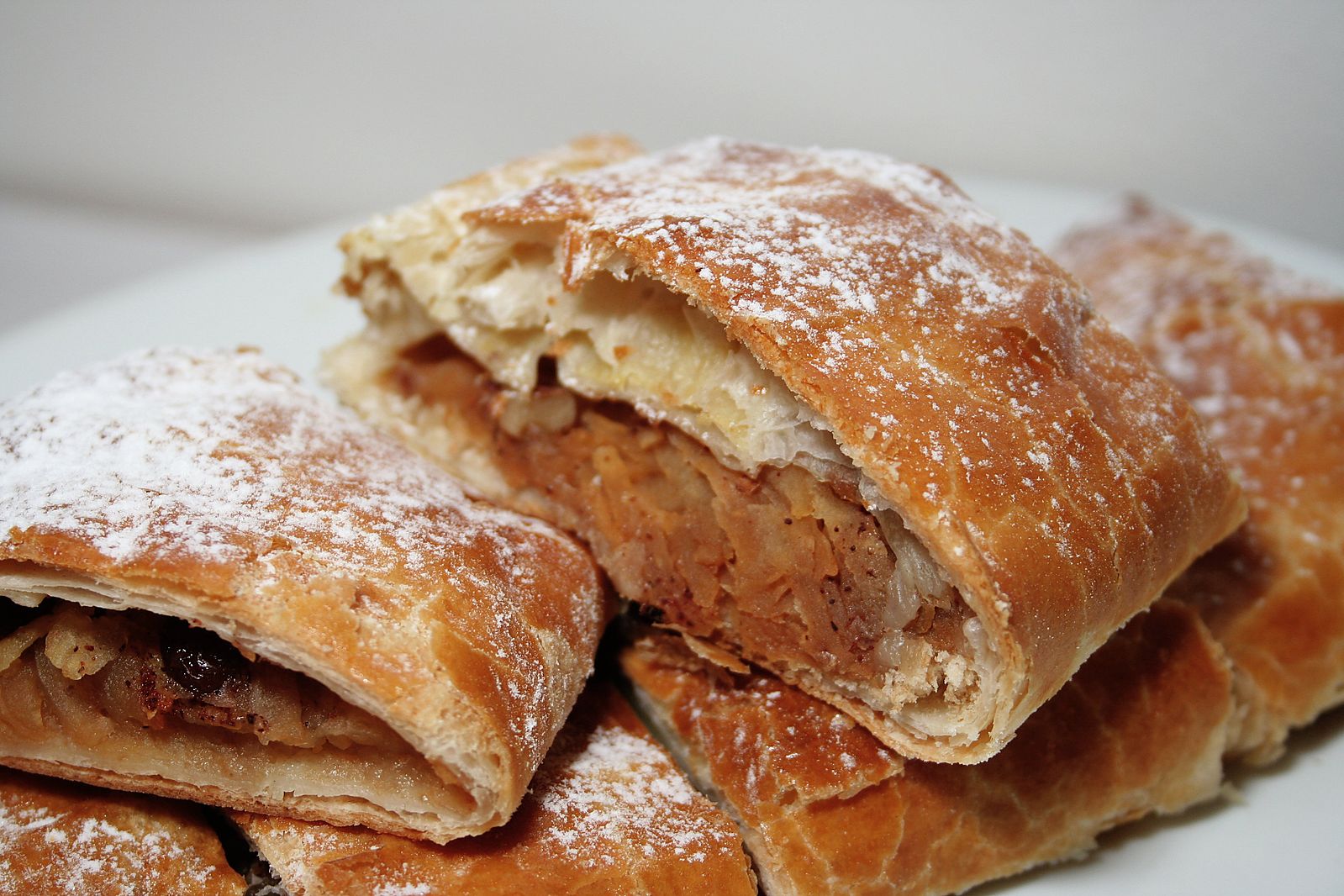
And finally, if you, dear reader, happen to prefer fruit-based desserts to chocolate ones, you’re in luck with our final treat (and we’re not judging, by the way). This delicate pastry gained popularity throughout the Habsburg Empire during the 18th Century, landing on royal plates at the Emperor’s court. While strudel dough is said to have found origins in Turkish pastry traditions — akin to the flaky, honey-soaked filo layers of baklava — the first recorded strudel recipe stretches back to 1696 where it is preserved in a cookbook stored at the Wienbibliothek im Rathaus, the official library of the city of Vienna.
Strudel features a wonderfully elastic dough stretched to gossamer thin layers, folded over a mouthwatering filling and carefully rolled into a neat baton to be baked to golden perfection. A royal cook in the Austrian Emperor’s court, legend has it, declared that the dough should be so thin that one could read a love letter through it. To get it perfect does require a fair bit of practice (some bakeries employ two pairs of hands to help the dough stretch gently in opposite directions) but the flavour profile itself is comforting and homey. The beautifully flaky layers of dough can be filled with tart-sweet apples and rum-soaked raisins delicately scented with cinnamon — as in the popular Apfelstrudel — or may encase sour cherries, plum, apricot, and even savoury fillings like pumpkin and sauerkraut. One thing is for certain, strudel is just as delicious as any cake — without the lawsuits either!
This sweet exposition barely scratches the surface of Central Europe's decadent delights! As always, we are pleased to offer you a list of companion recipes to bring some of these edible stories to life. Here you can find recipes from all seven of our Wirth countries: Austria, Czech Republic, Croatia, Hungary, Poland, Slovakia, and Slovenia. Be a good global citizen and, in the interest of diplomacy, sample them all!
Companion Recipes & Resources
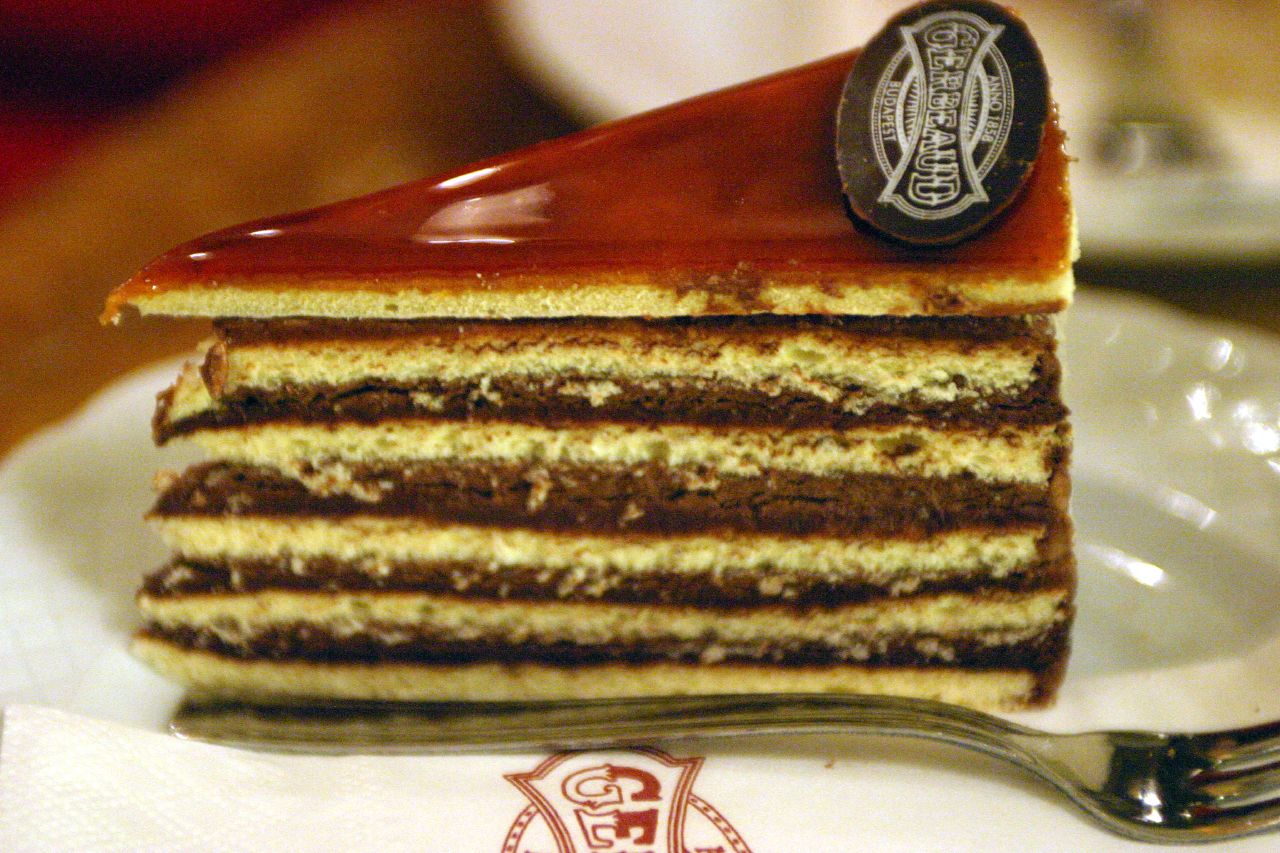
https://www.thespruceeats.com/hungarian-dobosh-torte-recipe-1136613
https://www.sacher.com/en/original-sacher-torte/recipe/
https://www.lilvienna.com/original-viennese-apple-strudel/
https://www.strudelandschnitzel.com/plum-cake/?cn-reloaded=1
https://www.chasingthedonkey.com/croatian-recipes-madarica-layered-chocolate-slice/
https://www.dessertfortwo.com/authentic-czech-kolaches/
https://www.internationalcuisine.com/potica/
https://www.thespruceeats.com/slovak-sweet-bobalki-recipe-1137371